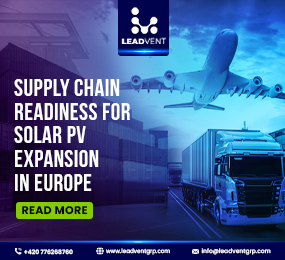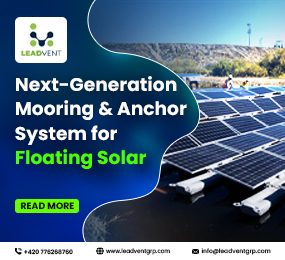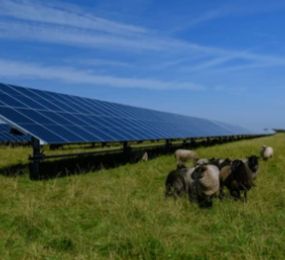Floating Offshore Solar and Hydrogen Industry: Pioneering Sustainable Energy Solutions
Renewable energies are metamorphosing very rapidly with travelling solar panels, and offshore hydrogen will change the game. Growing global energy needs with dwindling available land render offshore solutions an absolute must. These floating PV panels, complemented with green hydrogen production technology, open a big window of opportunity for sustainable, scalable, and efficient energy systems.
Rise of Floating Offshore Solar
Floating solar technology uses solar panels placed on water bodies—the ocean, reservoir, and lake—instead of on land. It saves very precious land and utilises an ample supply of sunlight. The floating offshore solar farm is the most promising for the future, as it can take into consideration an ocean space that has been underutilised and bring it closer to the shores of major population areas.
Floating solar capacity will have grown to over three GW in 2024 from about ten MW in 2014, according to the World Bank. Further projections estimate a global figure of about ten GW by 2030. Peak demand for this technology has been created by offshore installations, especially in countries that lack sufficient land availability, including Singapore, Japan, and the Netherlands.
How Floating Solar Panels Work
Floating solar systems rely on three key components:
- Floating Platforms: These floating structures support solar panels and buoy up waves and weather conditions.
- Mooring and Anchoring Systems: These special systems secure the floating platforms to prevent drifting, thus ensuring stability and performance.
- Electricity Infrastructure: The energy transmits through this grid or pairs with hydrogen electrolysis plants for production and storage.
Hydrogen: The Clean Energy Complement
Hydrogen is the byproduct from electrolysis, complementing strongly offshore solar energy: excess solar energy driving the electrolysis process splits water into its components, hydrogen and oxygen. The hydrogen can thus be stored, transported, or converted back to electricity when needed, allowing balancing of supply and demand.
Hydrogen is projected by the International Energy Agency to account for about ten to fifteen per cent of global energy supply by 2050, much of which could come from offshore solar-hydrogen systems.
Case Study: Hybrid Floating Solar Hydrogen System in the Netherlands
The first PV is floating in the North Sea and is inserted into hydrogen production. Energy is generated for immediate consumption, and green hydrogen is during hours with excessive sunlight.
Result: An increase of around thirty per cent in energy efficiency over conventional offshore solar installations and serves as evidence of the potential of integrated solar-hydrogen systems.
Mooring and Anchoring: Challenges and Innovations
One of the most profound technical challenges for the offshore floating solar field is the stabilisation of such systems in unpredictable marine conditions. Being able to effectively possess mooring and anchoring systems is important for the prevention of damage from winds, waves, and currents.
A DNV study recently confirmed that advanced mooring systems could extend offshore floating solar platform life by 35%, therefore improving the economic viability of this technology.
The Solar Power Forum: Leading Floating Solar and Hydrogen Conversations
The Solar Power Forum, organised by Leadvent Group, is a unique gathering of the brightest minds in global energy, engineering, and policy realms to discuss the future of offshore floating solar and hydrogen production.
What to Expect at the Solar Power Forum
- Industry Insights: Watch for updates on floating solar panels, mooring and anchoring technologies, and integration of floating PV panels with hydrogen production from renowned experts in the industry.
- Case Studies from the Field: Successful plants comprising offshore solar-hydrogen hybrids and novel mooring designs will be assessed.
- Technological Showcase: Next-gen materials, self-cleaning panels, and resilient mooring solutions that enhance the life of offshore solar will be showcased.
- Global Networking Opportunities: Network with energy innovators, project leaders, and policymakers to collaborate on shaping the future of offshore solar and hydrogen energy systems.
Case Study Spotlight: Offshore Solar in Singapore Waters
Singapore has recently been able to launch one of the largest floating solar farms in the world, spanning 45 hectares. With over 122,000 floating PV panels, the project supplies fifty MWp of noteworthy power sufficient to neutralise thirty metric tonnes of carbon emissions every year. The success of this vibrant project will be a major talking point at the Solar Power Forum, outlining the ins and outs of scaling up similar projects around the globe.
FAQs
1. How are floating solar panels different from conventional solar farms?
Floating solar panels are often 10-15% more efficient than their land-based counterparts as water cools the panels. They also help reduce evaporation from reservoirs.
2. What are the impacts of floating solar farms on the environment?
The systems have been designed to minimise environmental disruption. Some even encourage marine biodiversity through artificial reefs around mooring structures.
3. What part does hydrogen production play in offshore solar projects?
The surplus electricity from solar energy will be used to electrolyse water to produce green hydrogen. This hydrogen can then be saved or conveyed for conversion to electricity to make power available even when the sun is unable to shine.
Ending Note
The Solar Power Forum will be a very important marketplace of ideas for these innovations, bringing together industry leaders, engineers, and investors to help pave the way for the next generation of offshore solar and hydrogen energy systems.
Don't miss your chance to be part of the future of renewable energy – join the Solar Power Forum and lead the charge toward a cleaner, more sustainable world.










